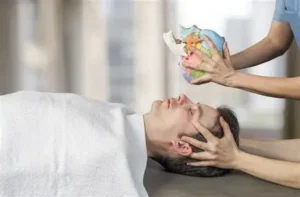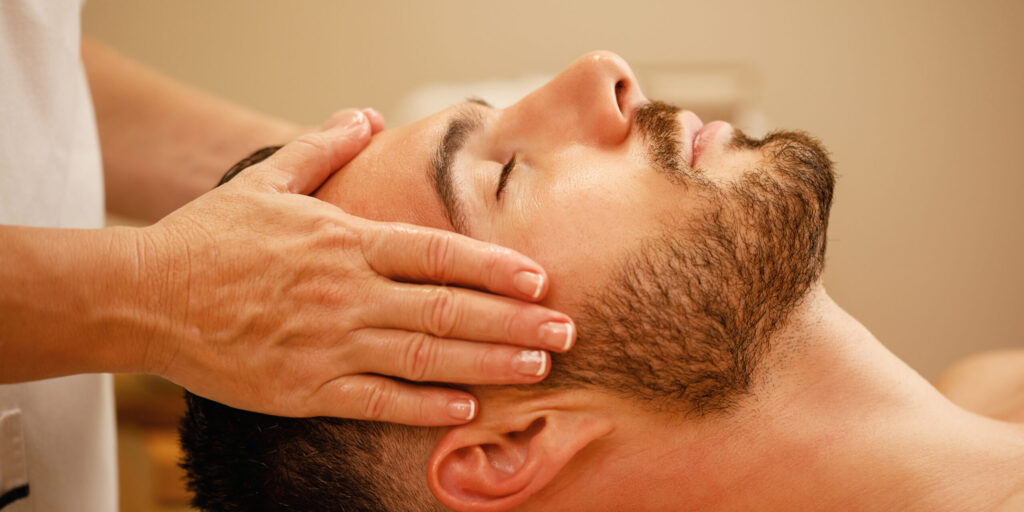Read time 5 minutes
Archith’s Note:
When I first came across craniosacral therapy, I wasn’t convinced.
After years of trying different treatments for chronic pain, stress, and fatigue, the idea of a light, almost hands-off approach felt too gentle to make a real difference. Still, something in me was curious enough to give it a try.
What I discovered was surprising: beneath that subtle touch was a depth of healing I hadn’t expected, an experience that shifted not just my symptoms, but the way I related to my body and its ability to recover.

From the Practitioner
As a craniosacral therapist practicing in Mumbai, I often meet people who come to me after trying many different approaches. They are usually seeking relief from a mix of challenges, imbalances in the central nervous system, immune system strain, mobility restrictions, muscle fatigue, or the weight of persistent stress.
My role is not to promise miracles, but to create a safe, quiet space where the body can begin to restore its own balance.
Deep Relaxation
One of the first shifts I notice in clients is a profound sense of calm. Through gentle touch and stillness, the nervous system often begins to settle. Breathing slows, muscles soften, and the body moves into a state of deep rest. Many describe this as a peace they haven’t felt in a long time.
Pain Relief
As the body unwinds, areas of chronic tension, like stiffness in the neck or lower back, often begin to release. Clients frequently report improved mobility and a lightness in their movements after sessions.
Emotional Release
Craniosacral therapy doesn’t just work on the physical level. Sometimes, emotions that have been held in the body for years surface, grief, anger, or even joy. I see this as part of the healing process, a way for the body and mind to let go of what no longer serves them.
Improved Sleep & Energy
When the nervous system is calmer, sleep often improves. Clients tell me they wake feeling more rested, with renewed energy to move through their day. This vitality is one of the most rewarding outcomes to witness.
Temporary Discomfort
Occasionally, clients experience short-lived effects like dizziness or fatigue after a session. I reassure them that this is often the body’s way of processing and rebalancing, like a gentle detox.
Enhanced Mind-Body Connection
Perhaps the most meaningful change is the way people begin to feel more connected to themselves. They notice subtle signals from their body, respond with greater care, and carry that awareness into their daily lives.
For me, craniosacral therapy is about holding space for these shifts, physical, emotional, and energetic. Each session is a reminder of the body’s innate wisdom and its capacity to heal when given the chance.
What Is Craniosacral Therapy?
Craniosacral therapy (CST) is a gentle, non-invasive healing modality. It works directly with the body’s central nervous system.
It originated from the field of osteopathy in the late 1940s. CST was developed by pioneering American osteopaths like Dr. William Garner Sutherland, Dr. Rollin E. Becker, and Dr. James Jealous.
Today, its biodynamic form, known as Biodynamic Craniosacral Therapy (BCST), focuses on the body’s innate intelligence to guide healing.
Unlike many therapies that rely on external manipulation, BCST uses a light, still touch to listen to the body’s rhythms and support its natural healing processes.
The practitioner doesn’t “do” the healing, the body does.
This approach ensures that there are no adverse effects, as the therapy follows the body’s own priorities.
How it Works: A gentle Invitation to Heal
During a session, the patient lies comfortably on a treatment table. The practitioner places their hands lightly on specific areas. It is often the head, spine, or sacrum and listens deeply to the subtle movements and rhythms within the body. These movements are known as craniosacral rhythms. It reflects the flow of cerebrospinal fluid and the vitality of the nervous system.
Patients often describe the experience as:
- Deeply restful
- Nurturing
- Rejuvenating
There’s no pressure, no force, just a quiet invitation for the body to recalibrate and restore balance.
Key Conditions Supported by Craniosacral Therapy
One of the most remarkable aspects of craniosacral therapy is its versatility. It’s not just for back pain or stress; it supports healing across a wide spectrum of conditions:
- Neurological disorders: Parkinson’s disease, Alzheimer’s, multiple sclerosis
- Autoimmune and degenerative diseases: Rheumatoid arthritis, cancer, IBS
- Musculoskeletal issues: Slip discs, scoliosis, joint pain, whiplash
- Mental health: Anxiety, depression, chronic fatigue, insomnia
- Endocrine and metabolic disorders: Diabetes, thyroid imbalance, PCOD
- Pediatric and developmental challenges: Autism, ADHD, cerebral palsy
- Trauma recovery: PTSD, birth trauma, concussion, surgery recovery
- Sensory disorders: Tinnitus, vertigo, sinusitis, glaucoma
It also enhances immune function and supports neuroplasticity. It also promotes emotional regulation, making it a powerful ally in both physical and emotional healing.
Real Stories, Real Healing
Clients across the globe have found relief from chronic conditions, emotional distress, and even post-surgical complications. From infants with colic to elderly patients with degenerative diseases, the therapy adapts to each individual’s needs.
Even high-profile figures like Ann Romney and Ricky Williams shared their positive experiences. Ann Romney lived with multiple sclerosis. Ricky Williams, a former NFL player recovered from head trauma.
Leading hospitals such as Mount Sinai and Memorial Sloan Kettering recommend CST. They treat for cancer and neurological conditions.
Why choose Biodynamic Craniosacral Therapy?
If you’re searching for a natural, holistic therapy that respects your body’s wisdom and works gently to restore balance, BCST might be the answer.
It’s especially beneficial for those who:
- Prefer non-invasive treatments
- Are sensitive to touch or manipulation
- Seek emotional and physical relief without medication
- Want to complement existing medical or alternative therapies
BCST is safe for infants, children, adults, and the elders. And there are no contraindications. Whether you’re dealing with a chronic illness or simply want to feel more grounded and relaxed, this therapy offers a space for deep healing.
Meet the Therapist: Niyati Nath
Niyati Nath is based in Mumbai, India. She is a certified BCT therapist (BCST, ICSB Switzerland) who has been practicing for nearly a decade.
Her journey from law to healing reflects her deep commitment to helping others reconnect with their inner vitality. She continues to study with global thought leaders in the field. She brings a compassionate, intuitive presence to every session.
For more information on biodynamic craniosacral therapy, visit www.craniosacral.care.
DISCLAIMER
These reflections are based on personal experience and do not constitute medical advice. Always consult your healthcare provider when exploring therapeutic options.


